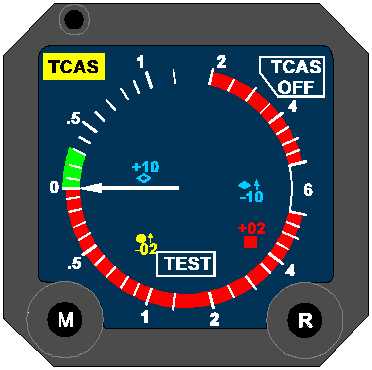TM 1-1510-225-10
3B-195
passes the internal self-test, the message "TCAS
System Test Okay" is annunciated. If the TCAS
system fails, the message "TCAS System Test Fail"
will be annunciated and the TCAS flag will be in view.
p. Operating Procedures. There are no
particular preflight procedures to be performed on the
TCAS. The only warmup time required is about
10 seconds after application of primary power for the
unit power supplies to come to full voltage and the
computer circuits to be reset to initial operating
conditions.
NOTE
The average RF output power of the TCAS
is below the minimum allowable for human
exposure. The system may be operated
normally on the ground without danger to
personnel in the vicinity.
When executing takeoff and climbout, it is
suggested the 6 nm, or shorter range and ABOVE
scan be used. This will eliminate the display of
intruders more than 2700 feet below you and allow
intruders at altitudes up to 9900 feet above you to be
detected during climbout. This range will keep distant
intruders from cluttering the display at the time your
aircraft is in areas of high traffic density, such as
airport traffic areas. Any available range and altitude
selection may be used.
(1) The following steps may be performed
any time before system operation is required.
1. Select STBY on transponder/TCAS
control. Power is applied to the
transponder and TCAS any time the
related primary power circuit breaker
is closed. There is no off position.
2. Set assigned ATC squawk code for
transponder
on
transponder/TCAS
control.
3. Select ALT or altitude source.
4. Select transponder 1 or 2.
5. Select 6 nm range.
(2) To initiate self-test, perform the following:
1. Select TEST, then select STBY on
transponder/TCAS control.
2. Vertical speed/TCAS indicator will
remove operating TCAS display from
indicator and show traffic test pattern
and TEST on indicator.
Figure 3B-153. TCAS System Test

